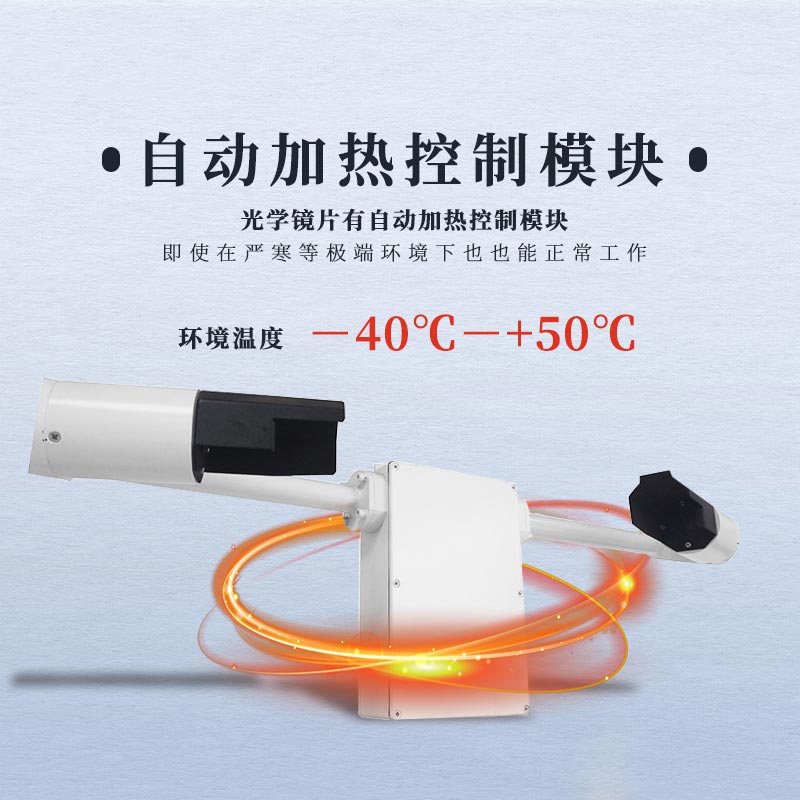Shandong Fengtu IOT Technology Co., Ltd
Sales Manager:Ms. Emily Wang
Cel,Whatsapp,Wechat:+86 15898932201
Email:info@fengtutec.com
Add:No. 155 Optoelectronic Industry Accelerator, Gaoxin District, Weifang, Shandong, China

Sales Manager:Ms. Emily Wang
Cel,Whatsapp,Wechat:+86 15898932201
Email:info@fengtutec.com
Add:No. 155 Optoelectronic Industry Accelerator, Gaoxin District, Weifang, Shandong, China
time:2024-09-27 08:37:33 source:Weather Station viewed:578 time
In dock operations, visibility is a key meteorological factor that directly affects the safety and efficiency of ship entry and exit, cargo loading and unloading, and storage operations. Under low visibility conditions, operational risks increase and may lead to operational delays or accidents. Therefore, establishing an automatic monitoring system for dock visibility is crucial for ensuring the safety and efficiency of dock operations.
The visibility sensor is a professional device used to measure visibility under weather conditions. Let's analyze its hardware structure today.
Transmitting unit - Uses infrared LEDs as the light source and directs the light beam to the sampling space through a lens system.
Receiving unit - Located at the other end of the sampling space, it is used to capture the light scattered back by aerosol particles.
Control unit - Responsible for coordinating the work of the transmitter and receiver and processing data.
Installation bracket - Used to fix the sensor and ensure its stable operation.
Dense foggy weather may lead to the closure of ports and affect the normal entry and exit of ships, thereby indirectly interfering with the operational activities of the dock. When the visibility in the dock area is reduced, for example, the sight of crane and other vehicle operators may be limited. This not only affects driving safety but may also make operations impossible in some cases. In order to deal with the impact of different visibility conditions on dock operations, a four-level visibility impact rating system can be set up, from level IV to level I, with the degree of impact increasing in turn.
(Note: VE represents visibility.)
Level IV - Ve≥1.0, good visibility, operations are not affected, and the dock can operate normally.
Level III - 0.3≤Ve<1.0 (or a fog warning signal is issued by the meteorological station). The visibility is average. Operations can continue, but attention should be paid to ships that may be delayed in entering the port due to heavy fog.
Level II - 0.15≤Ve<0.3, low visibility. Operations need to be carried out carefully and additional safety measures may be required.
Level I - Ve<0.15, extremely low visibility. For safety reasons, operations should be suspended.
This grading system helps dock managers make quick decisions based on real-time visibility conditions to ensure operational safety.

Intelligent online rainfall sensor is a kind of high-precision, real-time monitoring, automatic recording and remote transmission of rainfall data. It is mainly used for real-time monitoring of rainfall and analysis of rainwater collection, flow, intensity and other data, providing important data su...
Buoy water quality automatic monitoring station through on-site testing and real-time online monitoring, to help river management departments and users to grasp timely and accurate water quality information, for users to reflect real-time changes in water quality, management of water quality to prov...
Water is the source of life, and the quality of water is directly related to human health and the balance of the ecological environment. The Water Quality Monitor System is an instrument that guarantees water quality safety.It uses various professional probes, such as pH probes, residual chlor...
rain gauge wireless for wireless transmission of precipitation, Rain Gauge Wireless is a high-precision, long-range rain gauge that easily and accurately determines rainfall....